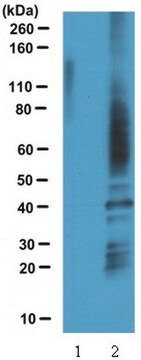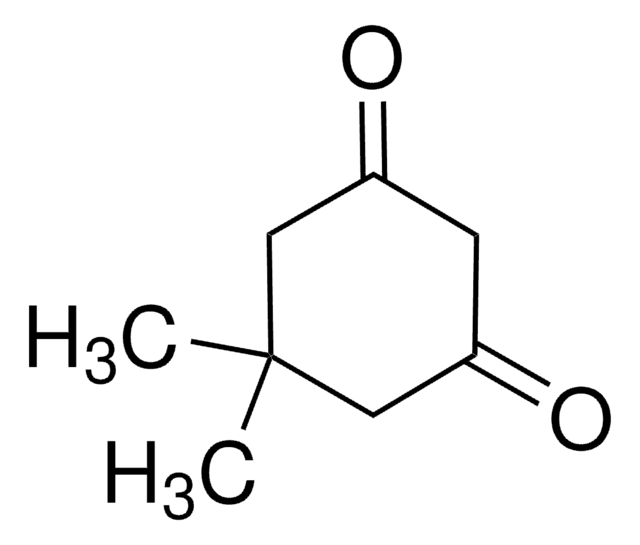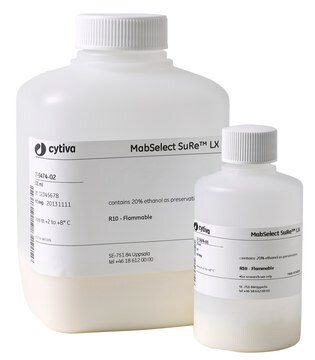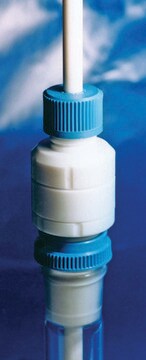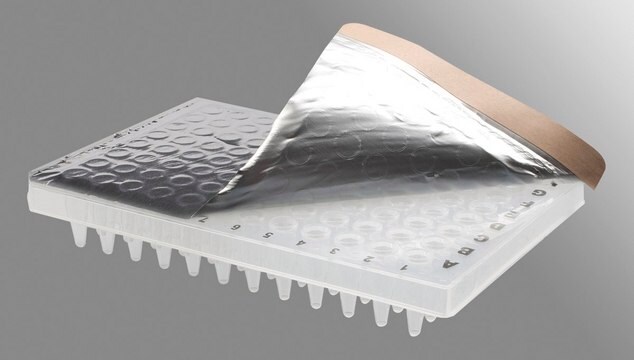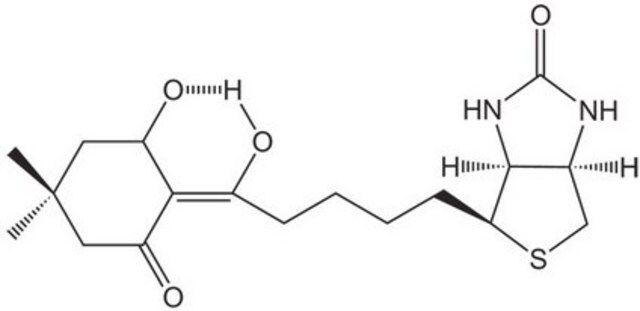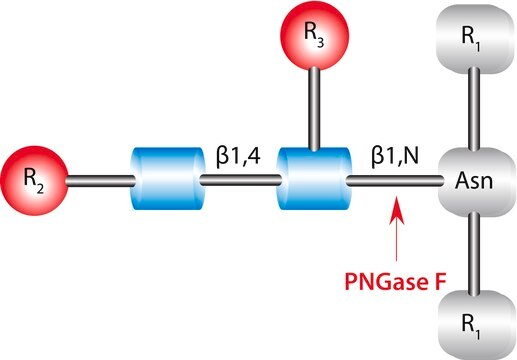07-2139
Anti-Cysteine Sulfenic Acid Antibody
serum, from rabbit
Autenticatiper visualizzare i prezzi riservati alla tua organizzazione & contrattuali
About This Item
Codice UNSPSC:
12352203
eCl@ss:
32160702
Prodotti consigliati
Origine biologica
rabbit
Forma dell’anticorpo
serum
Tipo di anticorpo
primary antibodies
Clone
polyclonal
Reattività contro le specie
mouse, rat, human
Reattività contro le specie (prevista in base all’omologia)
mammals
tecniche
western blot: suitable
Condizioni di spedizione
wet ice
modifica post-traduzionali bersaglio
unmodified
Descrizione generale
Protein sulfenic acid formation is a reversible post-translational modification that may be used to monitor protein oxidation on reactive cysteines within target proteins. This can be detected with protein sulfenic acid derivatised with dimedone.
Specificità
This antibody recognizes proteins containing cysteine sulfenic acid derivitized with dimedone.
Immunogeno
Epitope: Other
KLH-conjugated corresponding to cysteine sulfenic acid.
Applicazioni
Anti-Cysteine Sulfenic Acid detects levels of Cysteine Sulfenic Acid proteins & has been published & validated for use in WB.
Research Category
Apoptosis & Cancer
Apoptosis & Cancer
Research Sub Category
General Post-translation Modification
General Post-translation Modification
Western Blot Analysis: A previous lot of this antibody detected cysteine sulfenic acid in NIH/3T3 and HEK293 cell lysates.
Qualità
Evaluated by Western Blot in rat ventricular myocyte lysate.
Western Blot Analysis: 1:10,000 dilution of this antibody detected cysteine sulfenic acid on 10 µg of rat ventricular myocyte lysate.
Western Blot Analysis: 1:10,000 dilution of this antibody detected cysteine sulfenic acid on 10 µg of rat ventricular myocyte lysate.
Descrizione del bersaglio
Multiple kDa are observed that increases with oxidized stress (H2O2).
Stato fisico
Unpurified
Unpurified rabbit polyclonal with 0.05% sodium azide.
Stoccaggio e stabilità
Stable for 1 year at from date of receipt.
Handling Recommendations: Upon receipt and prior to removing the cap, centrifuge the vial and gently mix the solution. Aliquot into microcentrifuge tubes and store at -20°C. Avoid repeated freeze/thaw cycles, which may damage IgG and affect product performance.
Handling Recommendations: Upon receipt and prior to removing the cap, centrifuge the vial and gently mix the solution. Aliquot into microcentrifuge tubes and store at -20°C. Avoid repeated freeze/thaw cycles, which may damage IgG and affect product performance.
Risultati analitici
Control
Rat ventricular myocyte lysate
Rat ventricular myocyte lysate
Esclusione di responsabilità
Unless otherwise stated in our catalog or other company documentation accompanying the product(s), our products are intended for research use only and are not to be used for any other purpose, which includes but is not limited to, unauthorized commercial uses, in vitro diagnostic uses, ex vivo or in vivo therapeutic uses or any type of consumption or application to humans or animals.
Non trovi il prodotto giusto?
Prova il nostro Motore di ricerca dei prodotti.
Codice della classe di stoccaggio
10 - Combustible liquids
Classe di pericolosità dell'acqua (WGK)
WGK 1
Certificati d'analisi (COA)
Cerca il Certificati d'analisi (COA) digitando il numero di lotto/batch corrispondente. I numeri di lotto o di batch sono stampati sull'etichetta dei prodotti dopo la parola ‘Lotto’ o ‘Batch’.
Possiedi già questo prodotto?
I documenti relativi ai prodotti acquistati recentemente sono disponibili nell’Archivio dei documenti.
Hayato Irokawa et al.
The Biochemical journal, 478(7), 1453-1470 (2021-03-23)
Redox regulation of proteins via cysteine residue oxidation is involved in the control of various cellular signal pathways. Pyruvate kinase M2 (PKM2), a rate-limiting enzyme in glycolysis, is critical for the metabolic shift from glycolysis to the pentose phosphate pathway
Claire Maller et al.
Antioxidants & redox signaling, 14(1), 49-60 (2010-06-04)
Protein sulfenic acids (SOHs) are the principal oxidation products formed when redox active proteins interact with peroxide molecules. We have developed a new antibody reagent that detects protein SOHs derivatized with dimedone. Using this new antibody, we found that glyceraldehyde
Il team dei nostri ricercatori vanta grande esperienza in tutte le aree della ricerca quali Life Science, scienza dei materiali, sintesi chimica, cromatografia, discipline analitiche, ecc..
Contatta l'Assistenza Tecnica.